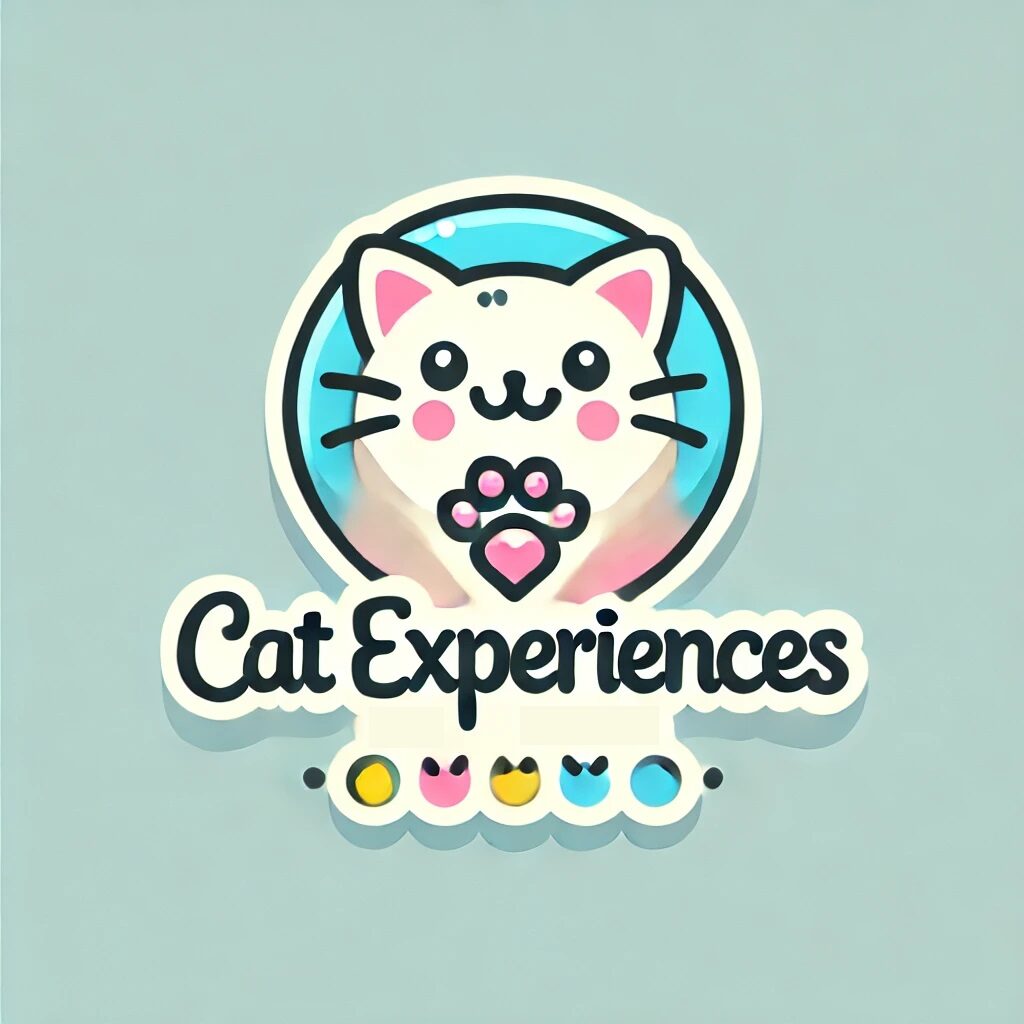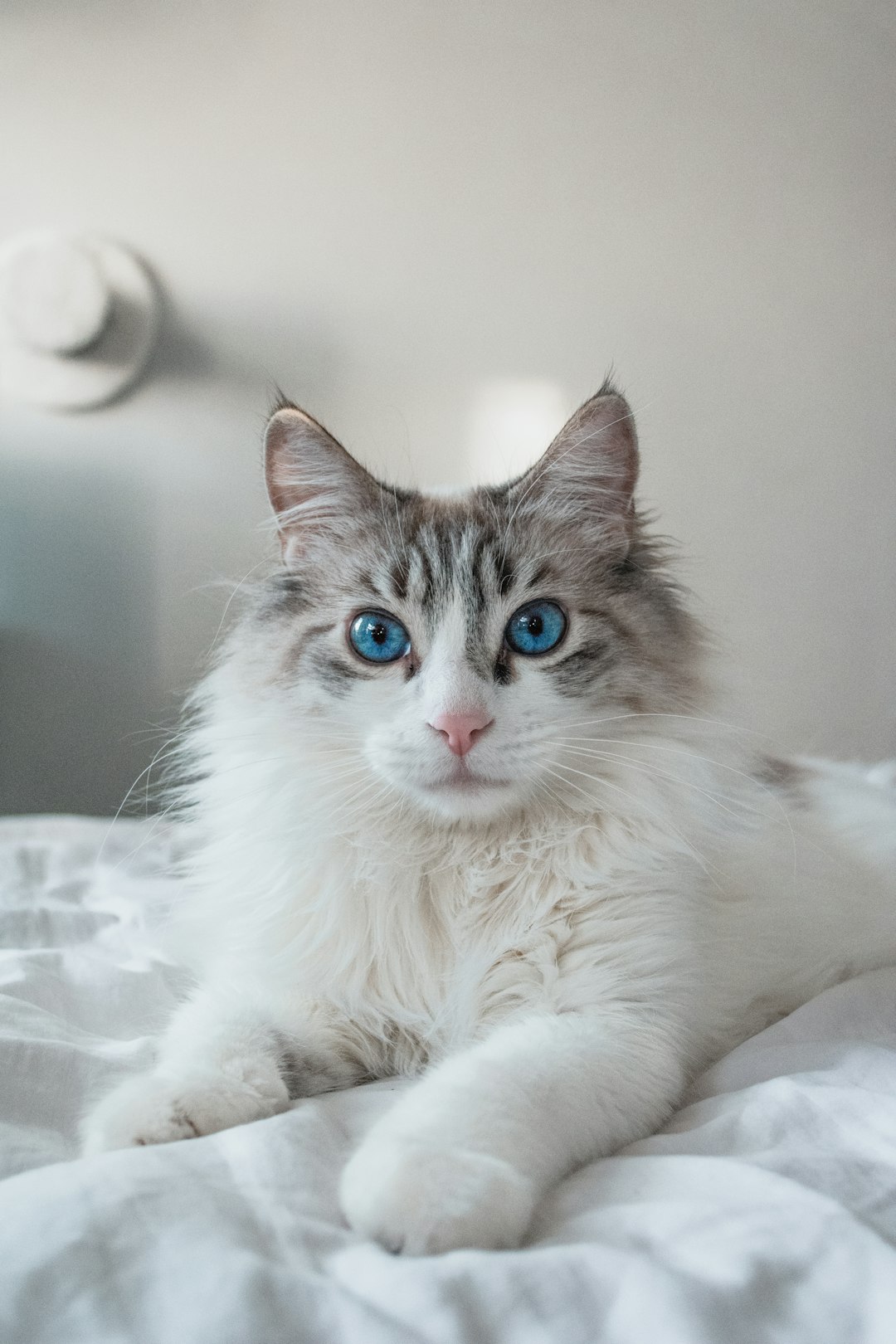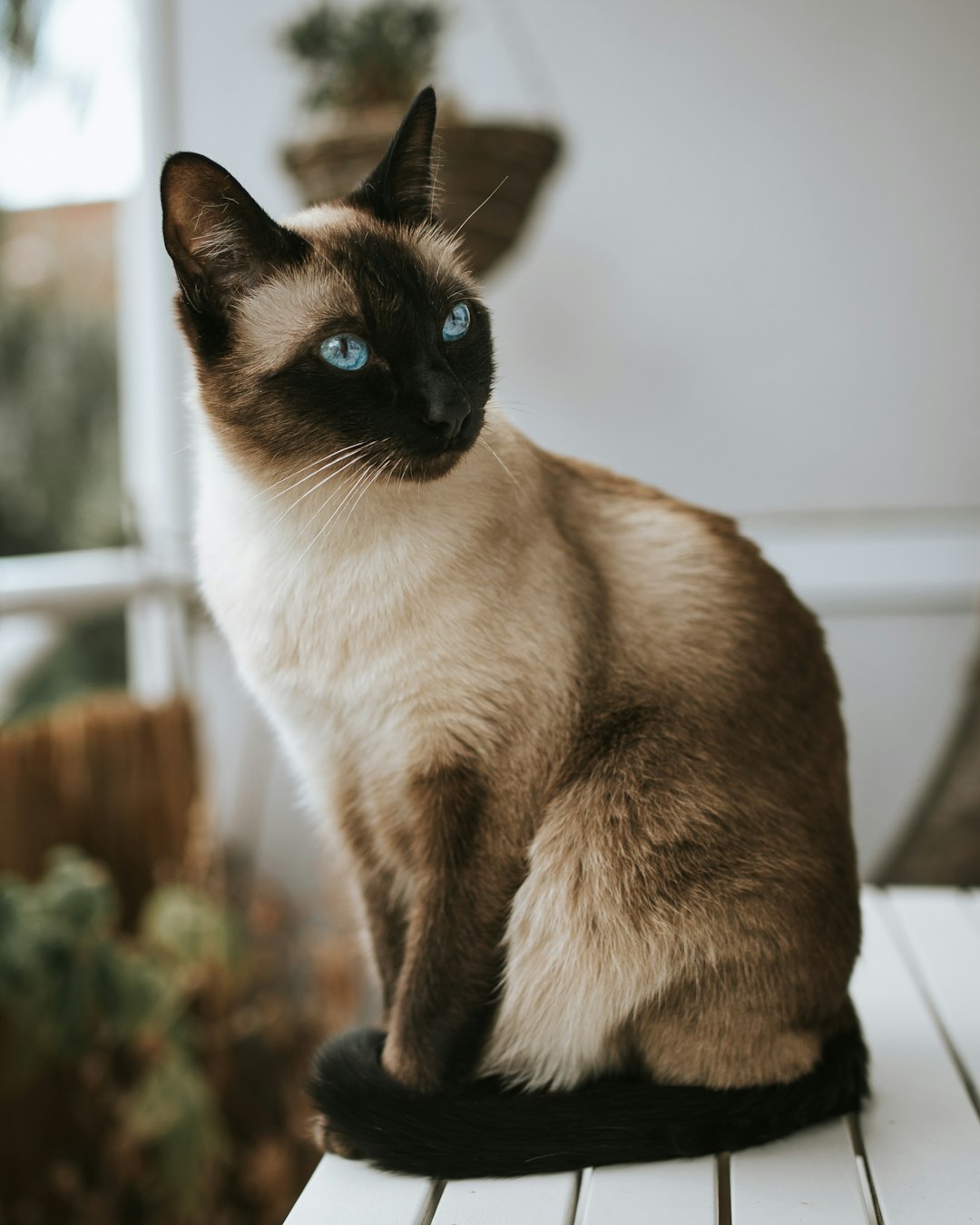In today’s world, prioritizing our pets’ health has become more essential than ever, and nutrition plays a crucial role in achieving optimal well-being for our furry companions. Therefore, finding the right Wellness cat food can significantly impact your feline’s health, ensuring they receive balanced nutrition tailored to their unique needs. This blog post delves into various aspects of wellness in cat nutrition, exploring the best products available on the market. From understanding what defines wellness cat food to comparing brands and ingredients, we will help you navigate the journey toward a healthier diet for your beloved cat. So let’s embark on this path to wellness together, ensuring your kitty thrives with the best nourishment possible.
Understanding the Importance of Wellness in Cat Nutrition
The Role of Balanced Nutrition in Feline Health
Balanced nutrition is a cornerstone of feline health, directly impacting your cat’s overall well-being. Providing a diet rich in essential nutrients promotes:
- Strong Immune System: A robust diet helps support immune function, reducing susceptibility to diseases.
- Healthy Weight Management: Proper nutrition assists in regulating weight, preventing obesity-related issues.
- Shiny Coat and Healthy Skin: Essential fatty acids and proteins contribute to a soft, shiny coat and healthy skin.
To illustrate the importance of these components, here’s a table summarizing the critical nutrients and their benefits:
| Nutrient | Benefits |
|---|---|
| Proteins | Builds muscles and tissues |
| Fats | Provides energy and supports cognitive function |
| Vitamins | Aids bodily functions and enhances immunity |
| Minerals | Essential for bone health and various bodily processes |
| Water | Prevents dehydration and supports kidney function |
How Diet Affects Cat Behavior and Well-Being
The connection between diet and behavior in cats is profound. A well-nourished cat tends to exhibit:
- Increased Energy Levels: Proper nutrition fuels activity, promoting playfulness.
- Improved Mood: Nutrients like Omega-3 fatty acids may reduce anxiety and aggression.
- Enhanced Cognitive Function: Diets high in antioxidants support brain health and memory.
By choosing Wellness cat food that incorporates these vital nutrients, you can significantly improve not just your cat’s physical health, but also their emotional well-being. In addition to a carefully balanced diet, it is essential to monitor their responses to specific ingredients, ensuring a happy, healthy pet.
What is Wellness Cat Food?
Defining Wellness Cat Food
Wellness cat food is designed to provide balanced nutrition tailored specifically for feline health. It focuses on using high-quality ingredients sourced from reputable suppliers to foster overall well-being. Such products are characterized by their commitment to:
- Natural Ingredients: Most formulas avoid artificial fillers and preservatives.
- High Protein Content: Cats are obligate carnivores, necessitating a protein-rich diet for energy and muscle maintenance.
- Nutrient-Rich Formulations: These foods often include essential vitamins and minerals for optimal health.
Key Nutritional Benefits of Wellness Cat Food
Choosing the right nutrition has profound impacts on your cat’s health. Here are some key benefits:
| Benefit | Description |
|---|---|
| Enhanced Digestion | Ingredients like probiotics and prebiotics support gut health. |
| Healthy Skin and Coat | Omega fatty acids nourish skin and promote a shiny coat. |
| Weight Management | Formulas are crafted to maintain healthy weight, reducing the risk of obesity. |
| Boosted Immunity | Antioxidants and vitamins enhance the immune system function. |
| Dental Health | Some recipes include ingredients to help reduce plaque and tartar buildup. |
By incorporating natural ingredients and focusing on a balanced diet, wellness options strive to elevate your cat’s health and vitality. It’s an investment in their long-term well-being, ensuring they lead happy and active lives.
Top Ingredients to Look for in Wellness Cat Food
Essential Nutrients for Cats
When selecting a premium cat food option to promote health, consider the essential nutrients your feline friend needs. Look for these key components:
- Protein: Cats are obligate carnivores, meaning they thrive on animal-based proteins. Quality sources like chicken, turkey, and fish should be prioritized.
- Fats: Healthy fats provide energy and support skin and coat health. Omega-3 and Omega-6 fatty acids from fish oil or flaxseed are beneficial.
- Carbohydrates: While cats require fewer carbs than dogs, a small amount can aid digestion. Look for grains like brown rice or oats, and avoid fillers like corn and soy.
- Vitamins and Minerals: Vitamins A, B vitamins, and minerals like taurine (essential for heart health) are crucial for overall well-being.
Benefits of Natural and Organic Ingredients
Incorporating natural and organic ingredients into your cat’s diet offers several advantages:
- High Digestibility: Real meats and natural whole foods enhance nutrient absorption, ensuring your cat gets the most benefit.
- Reduced Allergens: Natural formulations typically avoid artificial additives, preservatives, and fillers, reducing the risk of allergies or sensitivities.
- Better Taste: Cats are the ultimate judges of flavor. Foods made with high-quality, natural ingredients often appeal to their taste buds, ensuring they enjoy their meals.
By choosing a brand that focuses on these essential nutrients and quality ingredients, you can confidently support your cat’s health and happiness, ensuring a vibrant life for your beloved pet.
Comparing Wellness Cat Food Brands
Popular Brands in the Wellness Cat Food Market
When exploring options for cat nutrition, several reputable brands stand out due to their commitment to quality and health. Here are some of the top contenders:
- Hill’s Science Diet: Renowned for their veterinary-backed formulas, they emphasize specific dietary needs and life stages.
- Royal Canin: Focuses on breed-specific formulas that cater to individualized health requirements.
- Orijen: Advocates for a high-protein, holistic approach with regionally sourced ingredients.
- Wellness: A key player, known for its grain-free and natural recipes aimed at overall feline wellness.
How to Evaluate Brand Quality
When assessing cat food brands, consider the following key factors to ensure you are choosing a high-quality product:
| Factor | What to Look For |
|---|---|
| Ingredient Sourcing | Look for brands that use high-quality, human-grade ingredients. Prioritize natural over artificial additives. |
| Nutritional Balance | Ensure the food meets AAFCO (Association of American Feed Control Officials) guidelines for balanced nutrition. |
| Recall History | Research the brand’s history for any recalls or safety concerns. Brands with a clean record typically maintain high safety standards. |
| Transparency | Choose brands that clearly list their ingredients and nutritional information on packaging to promote trust. |
| Customer Feedback | Read online reviews to gather insights into user experiences and pet satisfaction with the food. |
By being informed and cautious, you can select the right brand that aligns with your cat’s health needs and dietary preferences.
Wet vs. Dry Wellness Cat Food
Nutritional Differences Between Wet and Dry Food
When considering options for feline nutrition, it’s crucial to understand the distinct nutritional profiles of wet and dry food. Here’s a breakdown of their key differences:
| Nutrient | Wet Cat Food | Dry Cat Food |
|---|---|---|
| Moisture Content | 70-80% moisture | 10-12% moisture |
| Caloric Density | Lower calories per cup | Higher calories per cup |
| Protein Levels | Generally higher in quality | Often lower, but still adequate |
| Fiber Content | May contain less fiber | Often contains more fiber |
Each type offers unique benefits that cater to different dietary needs.
Pros and Cons of Each Type
Understanding the advantages and disadvantages can help you make an informed decision for your cat’s health.
Wet Cat Food:
- Pros:
- High moisture content aids in hydration.
- Generally more palatable, appealing to picky eaters.
- Supports urinary tract health due to increased water intake.
- Cons:
- Can be more expensive.
- Shorter shelf-life once opened.
- Requires refrigeration to preserve freshness.
Dry Cat Food:
- Pros:
- Convenient and easy to store.
- Longer shelf-life compared to wet food.
- Usually less expensive, making it a cost-effective option.
- Cons:
- Lower moisture content may contribute to dehydration.
- Less palatable for some cats, leading to reluctance to eat.
- May contain more carbs, which could contribute to obesity.
By weighing these factors, pet owners can confidently choose the best diet to promote overall health in their cats.
How to Transition Your Cat to Wellness Cat Food
Transitioning your feline friend to a healthier diet can be a vital step towards their overall well-being. The process should be gradual to avoid digestive upset and ensure your cat accepts the new food. Here’s how you can make this transition smooth and successful:
Steps for a Smooth Transition
- Start Slowly: Begin by mixing a small amount of Wellness cat food with your cat’s current diet. Aim for a ratio of 75% old food to 25% new food.
- Gradually Increase the New Food: Over the course of 7 to 10 days, slowly increase the proportion of the new food while decreasing the old one.
- Monitor Portions: Pay attention to your cat’s appetite and avoid spilling more food than they can consume in one sitting.
- Stay Consistent: Serve meals at the same time and in the same location each day to create a sense of security.
- Hydration is Key: Make sure your cat has access to fresh water throughout the transition process.
- Patience is Crucial: If your cat resists new food, do not force it. Instead, return to the previous food ratio and try again after a few days.
Signs Your Cat is Adapting Well
- Increased Interest in Food: Your cat shows curiosity or excitement when it’s mealtime.
- Balanced Digestion: Regular bowel movements without diarrhea or constipation indicate successful adaptation.
- Energy Levels: An increase in playful behavior or activity can signal better nutrition.
- Weight Maintenance: Keeping a healthy weight during the transition showcases that your cat is adjusting well to the new diet.
- Positive Mood: A general sense of well-being without any stress or anxiety related to meal times indicates acceptance.
By following these steps and monitoring your cat’s adaptation, you can ensure a healthy transition towards improved nutrition.
Common Myths about Wellness Cat Food
Debunking Misconceptions about Ingredients
When it comes to pet nutrition, myths can often cloud our judgment. Below are some common misconceptions regarding the ingredients in quality feline food:
- Myth 1: Grain-free is Always Better
Truth: Cats can digest certain grains such as brown rice and oatmeal. A grain-free diet is not inherently superior unless your cat has specific dietary restrictions. - Myth 2: Artificial Ingredients Are Necessary for Nutrition
Truth: Many high-quality brands use natural, wholesome ingredients without synthetic additives. Focusing on whole food sources can provide balanced nutrition. - Myth 3: By-products Are Bad
Truth: By-products can provide essential nutrients when sourced from reputable suppliers. Not all by-products are harmful; it’s all about the quality.
| Myth | Explanation |
|---|---|
| Grain-free is Always Better | Some grains can be beneficial and digestible for cats. |
| Artificial Ingredients Are Necessary | Whole ingredients without additives often provide better nutrition. |
| By-products Are Bad | High-quality by-products can still be nutritious and safe. |
Understanding Marketing Claims
Marketing can often mislead pet owners about what is truly beneficial for their cats. Here are some common claims and what they really mean:
- “Veterinarian Recommended”
- Consider any context or conditions under which a vet made the recommendation.
- “Natural”
- While appealing, this term may not guarantee a product is free of unwanted ingredients. Always review the ingredient list.
- “Balanced Nutrition”
- Ensure this claim is backed by scientific formulations and not just marketing jargon.
Properly navigating these claims will help you make informed decisions regarding your cat’s diet and health. When exploring options like wellness cat food, remain vigilant and rely on credible sources to separate fact from fiction.
Customer Reviews and Testimonials on Wellness Cat Food
Insights from Cat Owners
Feedback from fellow cat owners is invaluable when evaluating the effectiveness of any feline nutrition product. Many customers have shared their experiences, highlighting how certain brands have positively influenced their pets’ health and behavior. Here are some common sentiments found in reviews:
- Improved Energy Levels: A significant number of cat owners reported an increase in their furry friends’ energy after switching to a more nutritious diet.
- Taste Acceptance: Many cats are notoriously picky eaters, so it’s encouraging to see testimonials where cats eagerly devour these meals.
- Allergy Management: Several reviewers praised these formulations for their hypoallergenic properties, noting a marked decrease in allergic reactions.
Impact of Wellness Cat Food on Feline Health
Numerous testimonials underscore the potential health benefits associated with these carefully crafted diets. Below is a summary of key health improvements observed:
| Health Benefit | Owner Testimonials |
|---|---|
| Weight Management | Cats have lost weight in a healthy way, leading to improved mobility and playfulness. |
| Better Coat Condition | Owners noticed shinier, softer fur and reduced shedding. |
| Digestive Health | Many reported less vomiting and improved stool quality after making the switch. |
These reviews reflect the potential of Wellness cat food to positively impact feline health, showcasing real-life transformations brought about by a well-considered diet. By listening to the voices of satisfied cat parents, one can glean valuable insights into the tangible benefits of nutritious, wellness-focused cat food options.
Expert Recommendations for Choosing Wellness Cat Food
Guidelines from Veterinarians
When selecting the right food for your feline friend, veterinary professionals often provide valuable insights. Here are some expert recommendations:
- Choose High-Quality Protein: Look for a primary ingredient that is a named meat source (e.g., chicken, salmon) rather than meat by-products.
- Check for Essential Nutrients: Ensure the diet includes vital nutrients such as taurine, omega-3 fatty acids, and vitamins like A and E.
- Consider Life Stage: Cats have different nutritional needs depending on their age. Select formulations tailored for kittens, adult cats, or seniors.
- Look for Limited Fillers: Food rich in fillers like corn and soy can lead to obesity and other health issues. Opt for grain-free or low-carb options when possible.
- Consult Your Vet: Regular consultations with your veterinarian can guide you to the best choices based on your cat’s unique health profile.
What to Consider for Specific Health Needs
Certain felines may have special dietary needs that warrant careful consideration:
- Weight Management: For overweight cats, look for lower-calorie options with high fiber to help them feel satisfied.
- Food Allergies: Sensitive cats may require hypoallergenic or limited-ingredient diets to avoid triggers.
- Digestive Health: Probiotics and fiber-rich ingredients can aid digestion, making them essential for cats with gastrointestinal issues.
- Kidney Health: Low-phosphorus and high-quality protein options are recommended for cats with kidney problems.
- Dental Health: Dry food can help reduce plaque buildup, but always consult your vet about the best approach for dental care.
By following these guidelines and recommendations from professionals, you can make informed decisions to promote optimal health in your feline companion.
Frequently Asked Questions
What ingredients should I look for in wellness cat food?
When selecting wellness cat food, prioritize high-quality protein sources such as real meat, fish, or poultry as the primary ingredient. Look for whole food ingredients like fruits and vegetables that provide essential vitamins and minerals. Additionally, avoiding artificial additives, by-products, and fillers like corn and soy is crucial, as these can detract from the food’s nutritional quality. Omega fatty acids for skin and coat health and adequate hydration sources are also important.
How can I determine if wellness cat food is suitable for my cat’s specific health needs?
To determine if wellness cat food meets your cat’s specific health needs, it’s essential to consider their age, weight, activity level, and any underlying health issues like obesity, diabetes, or allergies. Consulting with a veterinarian can guide you in choosing the right formula that aligns with your cat’s dietary requirements. Moreover, many wellness brands provide specialized formulas designed for various life stages or health conditions to promote optimal health in felines.
What are the benefits of choosing grain-free wellness cat food?
Choosing grain-free wellness cat food can offer various benefits, particularly for cats with grain sensitivities or allergies. Grain-free diets often contain higher protein levels from meat sources and may help maintain healthier blood sugar levels in cats prone to diabetes. Additionally, such diets support optimal digestive health by including more digestible carbohydrates, like peas or potatoes, instead of traditional grains. However, it is important to monitor your cat’s overall performance and health, as not all cats suit grain-free diets.
How can I transition my cat to wellness cat food safely?
Transitioning your cat to wellness cat food should be done gradually to avoid digestive upset. Begin by mixing a small amount of the new food with their current diet, gradually increasing the proportion of the new food over 7-10 days until your cat is fully transitioned. Monitor for any adverse reactions or gastrointestinal issues, and if they occur, slow down the transition process. The key is patience and ensuring your cat likes the new food to encourage their consumption.
Are there specific wellness cat food brands that are highly recommended for optimal health?
Several wellness cat food brands are highly regarded for their commitment to quality ingredients and nutritional benefits. Some top contenders include Blue Buffalo Wilderness, Wellness CORE, and Royal Canin. Each of these brands offers various formulas, including grain-free options and specialized diets backed by research. Always check for AAFCO compliance to ensure the food meets nutritional standards and consider your cat’s unique preferences and dietary requirements when selecting the best brand.



